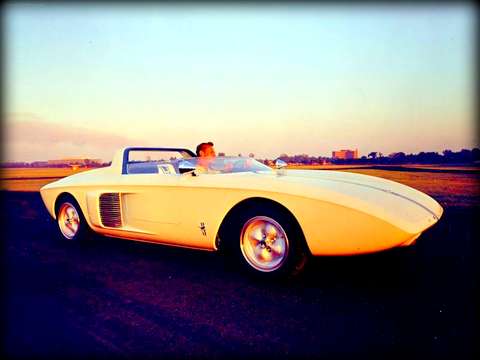Mustang Sadly
Posted on Feb 14, 2015 in Antique | Comments Off on Mustang Sadly
April 17th is the birthday of the Ford Mustang. Introduced on this date in 1964, the Pony Car has a long and varied history. To some, the car is an icon. To many others, the car is a reminder of what corporate America can do with a good idea.

Originally, the car was designed as a two seat, mid engine sports car, and named the T-5. Sexy as that sounds, they decided to change the name, though there is some debate as to how the name Mustang won. On one hand, John Najjar, the Executive Stylist supposedly named the car after the P-52 Mustang fighter plane. On the other, Robert J. Eggert, a market research manager said the name came from a book on Mustang horses, given to him by his wife. Officially, Ford says it was named after the fighter plane, but the marketing department decided that the free-spirited American Mustang was a better image for the car. To reinforce the marketing images of owners that “bucked the herd” they even made the grille mascot run opposite of American race horses on the track.

When the car was introduced, the new Mustang immediately sold 22,000 units, which was pretty astounding. In the first year Ford sold 400,000 copies, and over a million by 18 months, making the Mustang a huge success. The design and development took only 18 months, but Ford gave up on the original 2 seat concept because of the trouble they had with the Thunderbird. The result was a coupe and later a 2+2 model that became automotive icons.

Then it all went to hell. Ford is a company heavy with committees, and for some reason they cannot keep their hands of a good design. Each year until 1971 the Mustang got heavier and heavier. Ford was lucky that the body style could take much of the abuse, and cars like the 1968 and 1969 models were still quite attractive. But like Anna Nicole Smith, you eventually started to lose the impression that the Mustang had once been a pinup, because like Anna, the Mustang had packed on 800 pounds. By 1971, she was just a fat and slow draft horse. The weight was obvious, and even the sexy fastback started to look like a boat.

By 1974, Ford was looking to make a big change with the Mustang. Lee Iacocca was President by then, and had ordered the Mustang to be brought closer to its original size and design. Rather than a clean sheet of paper, the committees gave the designers a sheet with a Ford Pinto already on it. They designed the car over that, using the recently purchased Ghia name for some added class. Overall the Mustang II is hated by most pony car fans. But, the car did bring up the slumping sales from 111, 015 to 385,993. Even today, if you look closely at the design, there is a lot of styling cues that hark back to the original. You have to squint really hard, but they are there. Basically, the little pony car was back, though it was still heavy, poorly built and underpowered.

It took less than a year for the public to get bored by the Mustang II, and sales faltered. Ford stuck with the Mustang II design until 1979, when it created the next generation, angular Fox bodied car. This change once again brought sales records to 369,936 units. The car was to be a front-wheeled drive V6 powered sister to the Mazda MX6, but Mustang fans complained, and Ford made it the standard V8 optioned RWD car.

Now at Generation four in 1994, the new Mustang was the first new design in 15 years. Styled by Patrick Schiavone, it incorporated styling cues from previous designs, and put 10 more years under the Mustangs belt. In 1999, the car was restyled a little to incorporate the “New Edge” styling theme, which brought crisper lines and sharper countours.

Finally, in 2005 we were given the S-197 Mustang, or the pretty one as most people know it. This car was designed by Sid Ramnarace, and echoes the Mustangs of old. The design concept is called Retro-Futurism, and is used on the Camaro as well as the Dodge Challenger. The committees at Ford updated this design in 2008 to include seats with soybean based material…in some lame effort to make it green. In 2010, the lines were made a little crisper, and the car was made to look a lot meaner. Overall the design is pretty, but it gives the impression of a plastic toy, similar to the Camaro.

The Mustang has come a long way in 48 years, and according to the auto blogs, the new retro look may be gone by 2015. Over the years, the committees at Ford have taken beautiful designs and ruined them, only to come up with pretty designs, and ruin those. The sales chart for the Mustang is almost a direct line heading down, with a few peaks with the new introductions. Had they left the design alone, maybe they would have sold more cars. In any case, the Ford Mustang is a classic and still looks pretty good for its age.






.gif)

